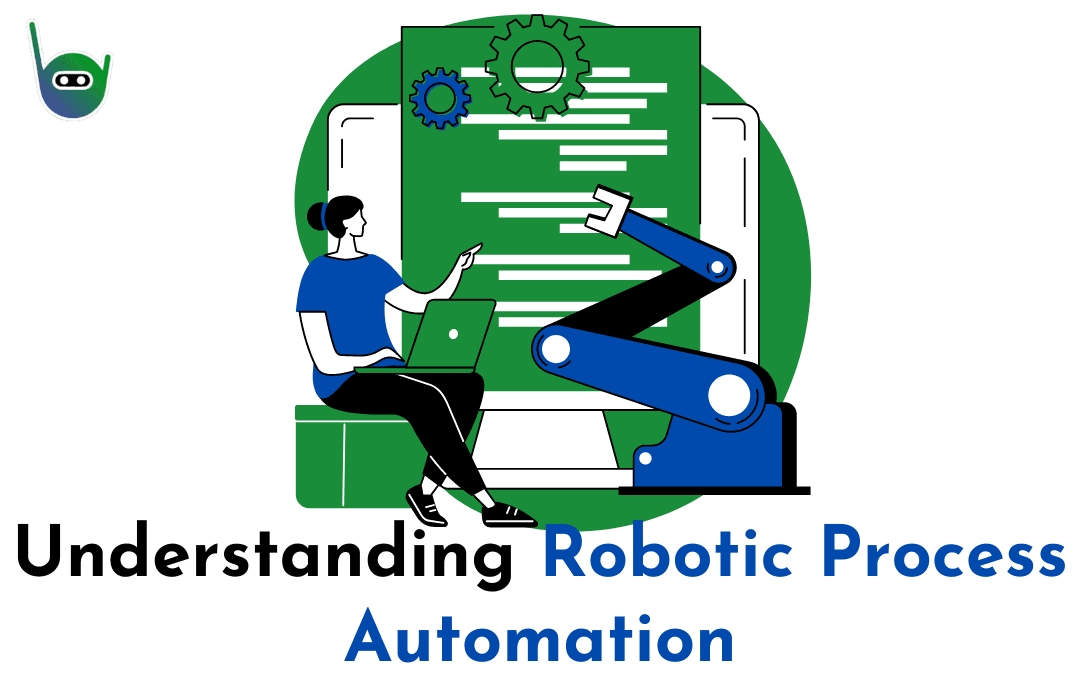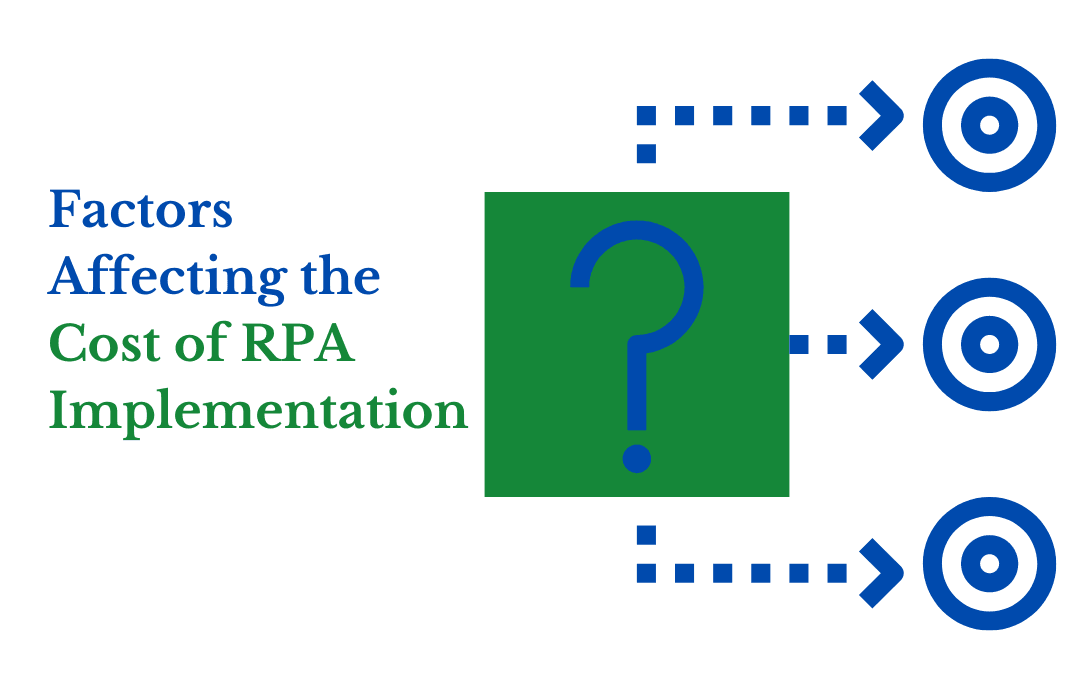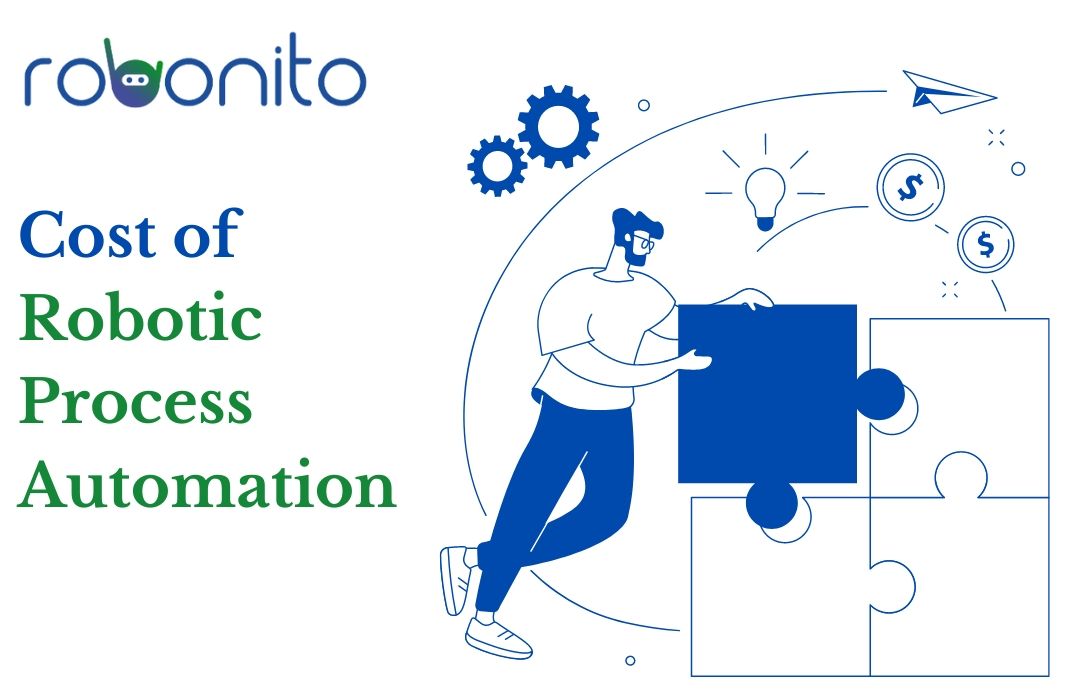Welcome To The Guide In reduction and Understanding the Cost of Robotic Process Automation. In today's digital era, businesses are constantly seeking ways to streamline their operations, improve productivity, and reduce costs. Robotic Process Automation (RPA) has emerged as a powerful solution that enables organizations to automate repetitive and rule-based tasks, freeing up valuable human resources for more strategic and complex activities. However, before embarking on an RPA journey, it's crucial to understand the cost implications associated with implementing this technology.
Understanding Robotic Process Automation (RPA)

Robotic Process Automation refers to the use of software robots or "bots" to automate repetitive and rule-based tasks typically performed by humans. These bots interact with existing applications, perform data entry, extract information, and complete various manual processes. RPA technology mimics human actions and operates on the user interface level, making it compatible with different software systems without the need for complex integrations.
Benefits of Robotic Process Automation
Implementing RPA offers several significant benefits to organizations. Firstly, it enhances operational efficiency by automating mundane and repetitive tasks, reducing errors and processing time. Secondly, RPA allows businesses to achieve higher accuracy and consistency in data entry and processing, mitigating the risks associated with human error. Moreover, RPA can operate 24/7, leading to increased productivity and faster turnaround times. Additionally, RPA enables scalability, as organizations can easily adjust the number of bots to match their workload requirements.
Factors Affecting the Cost of RPA Implementation

The cost of implementing RPA can vary based on several factors. Understanding these factors is essential for accurate budgeting and cost estimation. Some key factors influencing the cost of RPA implementation are as follows:
Initial Setup Costs
The initial setup costs of RPA include activities such as process identification and assessment, business analysis, and process redesign if necessary. These costs are associated with understanding the existing processes and identifying suitable automation candidates.
Sometimes Licensing and Software Costs Increase The Cost of Robotic Process Automation
RPA software vendors provide licenses for their platforms, which allow organizations to deploy and manage software robots. The cost of licenses can vary based on factors such as the number of robots, functionalities required, and the duration of the license agreement.
Infrastructure and Hardware Requirements act as a KPI IN Cost of Robotic Process Automation
Organizations need to consider the infrastructure and hardware requirements for implementing RPA. This includes servers, storage, and network infrastructure capable of supporting the automation activities. Depending on the scale of deployment, additional hardware investments may be necessary.
Training and Skill Development
Training the workforce to work alongside RPA technology is crucial for successful implementation. Employees need to learn how to collaborate with software robots and handle exceptions that require human intervention. Allocating resources for training and skill development should be accounted for in the overall cost.
Maintenance and Support
Once RPA is implemented, ongoing maintenance and support are necessary to ensure the system runs smoothly. This includes monitoring the bots' performance, troubleshooting issues, and applying updates or patches to the software.
Return on Investment (ROI) Affects The Cost of Robotic Process Automation
Calculating the return on investment is an essential step in assessing the cost-effectiveness of RPA implementation. The ROI calculation involves comparing the cost savings achieved through automation against the initial and ongoing costs. By identifying the processes with the highest ROI potential, organizations can prioritize their automation efforts and maximize the benefits.
How Much Is Actually Cost of Robotic Process Automation (RPA)?
Determining the pricing structure of an RPA solution relies heavily on the composition of bots and software components within your deployment. On average, the cost estimation for a single bot or unit falls within the range of $5,000 to $15,000. However, as per HfS, licensing expenses represent only a fraction, approximately 25-30%, of the overall RPA cost. The remaining 75% encompasses various elements, including:
-
Yearly fees for renewing the RPA license.
-
Acquisition of training or the hiring of internal subject matter experts.
-
Consulting expenditures for implementation, either through the RPA vendor or a third party.
-
Infrastructure setup requirements.
-
Costs associated with third-party integrations and their subsequent renewals. This includes complementary software such as process mining and process discovery tools.
-
Expenses arise from costly break-fix cycles that hinder the realization of RPA's true potential.
How To Maximize ROI and Reduce The Cost of Robotic Process Automation
To maximize ROI and reduce the cost of Robotic Process Automation (RPA), there are several strategies and best practices that organizations can implement. Let's explore some of them:
1. Perform a thorough process analysis: Before implementing RPA, conduct a comprehensive analysis of your processes to identify areas with the highest automation potential and ROI. Focus on tasks that are rule-based, repetitive, and time-consuming, as automating these can yield significant cost savings.
2. Prioritize processes with high ROI: Not all processes are created equal in terms of ROI potential. Prioritize the automation of processes that offer substantial cost savings or efficiency gains. By focusing on high-impact processes, you can maximize the return on your investment in RPA.
3. Start with a pilot project: Rather than automating all processes at once, start with a pilot project to test the effectiveness of RPA in your organization. Choose a process that is relatively simple and has a high likelihood of success. This approach allows you to evaluate the ROI and identify any challenges or adjustments needed before scaling up.
4. Optimize process design: Before automating a process, optimize its design to eliminate unnecessary steps and streamline workflows. By making the process more efficient and error-proof, you can maximize the benefits of automation and reduce costs associated with manual intervention or error correction.
5. Invest in proper training and change management: Training your employees on how to work alongside RPA technology is crucial for successful implementation. Employees should understand the purpose of RPA, its benefits, and how their roles may evolve. Additionally, effective change management ensures smooth adoption and minimizes resistance to the new technology.
6. Leverage reusable components and libraries: RPA platforms often provide reusable components and libraries that can accelerate the development and deployment of bots. These components, such as pre-built automation scripts or templates, can save time and effort in the implementation process, reducing costs.
7. Regularly monitor and optimize performance: Continuously monitor the performance of your RPA implementation to identify areas for improvement. Measure key performance indicators (KPIs) such as cost savings, processing time, error rates, and productivity. Use this data to refine your automation strategies and make adjustments that further maximize ROI.
8. Consider cloud-based RPA solutions: Cloud-based RPA platforms offer scalability, flexibility, and cost advantages compared to traditional on-premises deployments. Cloud solutions allow organizations to pay for the resources they use, reducing upfront infrastructure costs and enabling easy scalability as automation needs to evolve.
9. Evaluate vendor pricing models: When selecting an RPA software vendor, carefully evaluate their pricing models. Some vendors offer flexible pricing based on the number of bots or transactions, allowing you to align costs with your actual usage. Understanding and negotiating pricing terms can help optimize costs and maximize ROI.
10. Continuously innovate and explore intelligent automation: RPA is constantly evolving, and new technologies such as artificial intelligence and machine learning are being integrated into automation solutions. Stay updated on the latest advancements and explore intelligent automation capabilities that can further enhance efficiency and cost-effectiveness.
By implementing these strategies, organizations can maximize the ROI and reduce the cost of Robotic Process Automation, unlocking its full potential as a transformative technology for operational efficiency and cost savings.
| Strategies for Maximizing ROI and Reducing RPA Costs | Description | Metrics | Additional Details |
|---|---|---|---|
| 1. Perform a thorough process analysis | Conduct comprehensive analysis to identify highly automatable, rule-based, and repetitive tasks for cost-effective automation. | Automation Potential, Process Complexity | Use process mining tools for in-depth analysis |
| 2. Prioritize high ROI processes | Focus on automating processes that promise significant cost savings or efficiency gains to maximize returns. | Cost Savings, Efficiency Gains | Conduct ROI assessments before implementation |
| 3. Start with a pilot project | Test RPA effectiveness by initiating a pilot project on a simpler process, evaluating ROI and identifying necessary adjustments. | Pilot Success Rate, Implementation Time | Document lessons learned for future scaling |
| 4. Optimize process design | Streamline workflows by optimizing process design before automation to reduce manual intervention and errors. | Process Efficiency, Error Reduction | Utilize Lean or Six Sigma principles for optimization |
| 5. Invest in training and change management | Provide proper training to employees for seamless integration with RPA, ensuring smoother adoption and minimizing resistance. | Training Completion Rate, User Satisfaction | Implement change champions to support adoption |
| 6. Leverage reusable components and libraries | Utilize pre-built automation scripts and templates provided by RPA platforms to save time and effort during implementation. | Reusability of Components, Implementation Speed | Create a centralized repository for reusable components |
| 7. Regularly monitor and optimize performance | Continuously monitor KPIs like cost savings, processing time, and error rates to refine automation strategies for improvement. | Cost Savings Percentage, Processing Time | Implement RPA analytics tools for real-time monitoring |
| 8. Consider cloud-based RPA solutions | Explore cloud-based solutions for scalability, flexibility, and cost advantages, reducing upfront infrastructure costs. | Scalability, Cost Savings, Flexibility | Assess security measures for cloud-based deployments |
| 9. Evaluate vendor pricing models | Carefully assess vendor pricing models to align costs with actual usage, considering flexible pricing based on bots/transactions. | Cost-Per-Bot, Transaction-Based Costs | Negotiate for volume discounts or long-term agreements |
| 10. Continuously explore intelligent automation | Stay updated on advancements in RPA integrating AI/ML, exploring new capabilities for enhanced efficiency and cost-effectiveness. | AI/ML Integration, Efficiency Improvements | Pilot emerging technologies in controlled environments |
Challenges and Considerations
While RPA offers numerous benefits, there are challenges and considerations to keep in mind. Organizations should carefully evaluate the processes suitable for automation to avoid potential pitfalls. It is also important to consider data security and privacy concerns when deploying RPA solutions. Additionally, managing the transition and ensuring employee buy-in are critical factors for successful adoption.
Future Trends in RPA Cost Optimization

The field of RPA is constantly evolving, and cost optimization continues to be a focus area. Future trends in RPA cost optimization include advancements in intelligent automation, leveraging artificial intelligence and machine learning algorithms to automate more complex tasks. Additionally, cloud-based RPA solutions offer scalability, flexibility, and cost-efficiency compared to traditional on-premises deployments.
Conclusion On Cost of Robotic Process Automation
In conclusion, the cost of Robotic Process Automation is influenced by various factors such as initial setup costs, licensing, infrastructure requirements, training, and ongoing maintenance. Despite the initial investment, RPA provides significant benefits in terms of improved operational efficiency, cost savings, and scalability. By carefully assessing the costs and benefits and implementing RPA strategically, organizations can unlock the full potential of this transformative technology.
Revolutionize your software testing with Robonito, the ultimate no-code RPA automation testing tool. Say goodbye to endless testing hours – Robonito slashes testing time by a staggering 98%! Ready to experience the future of software testing? BOOK A FREE DEMO NOW and transform your testing process today!
Frequently Asked Questions (FAQs) On Cost of Robotic Process Automation
1. How long does it take to implement RPA?
The implementation timeline for RPA can vary depending on the complexity and number of processes to be automated. Generally, it can take a few weeks to a few months to complete the implementation.
2. Can RPA replace human workers entirely?
RPA is designed to automate repetitive and rule-based tasks, but it does not replace the need for human workers entirely. Humans are still required for managing exceptions, decision-making, and tasks that involve creativity or complex judgment.
3. Is RPA only suitable for large enterprises?
No, RPA can benefit organizations of all sizes. Small and medium-sized enterprises can also leverage RPA to automate manual processes, improve efficiency, and reduce costs.
4. Are there any risks associated with RPA implementation?
While RPA offers significant benefits, there are risks to consider. These include potential data breaches, system failures, and challenges related to employee acceptance and change management.
5. How can I measure the success of RPA implementation?
The success of RPA implementation can be measured through key performance indicators such as cost savings, reduction in processing time, error rates, and improved productivity. Regular monitoring and evaluation are essential to track performance and identify areas for improvement.
